On The Job as a heartland waste collector: A rancid, repulsive and sobering experience
In the series where Channel NewsAsia journalists try working in some of Singapore’s essential but undervalued jobs, Aqil Haziq Mahmud gets his hands dirty as a waste collector. He comes away with a deep respect for the workers who deal with the relentless flow of trash.SINGAPORE: I don't know which was worse: The smell or the creepy crawlies. The stench of rotting food was like vomit mixed with dank, dirty laundry. I struggled not to retch. Then there were the bugs which scuttled everywhere as I bent down to pick up the trash.
Such working conditions are the norm for Zuwel, a Bangladeshi worker who clears trash from 29 blocks in Bukit Panjang every day.
I stepped into his shoes for a couple of days last month, labouring in the sweltering heat and dashing from one rubbish chute to another in an electric cart to empty the bins.
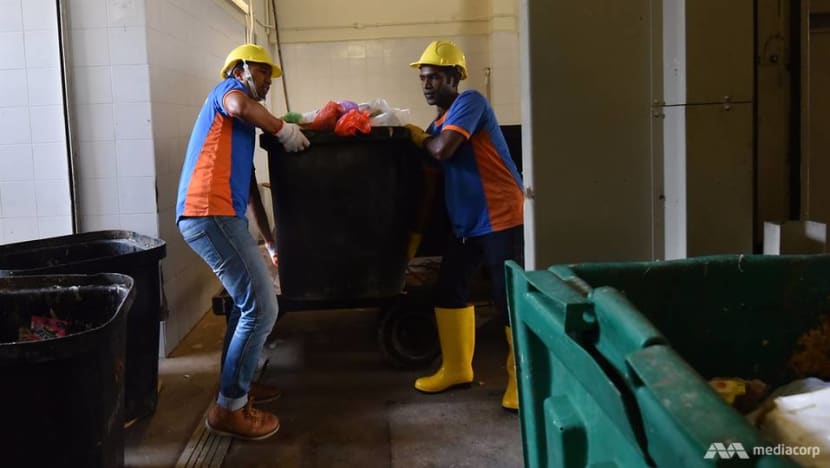
Zuwel’s job is to help keep the constant, relentless flow of waste under control. The work day begins at seven in the morning for the 27-year-old. He breaks for lunch at noon, finishes up the remaining blocks by seven in the evening, and heads home for dinner, which is usually chicken curry bought from a nearby coffee shop.
THE MEN BEHIND THE JOB
I walked into the Holland-Bukit Panjang Town Council office at Bangkit Road on my first morning on the job, where Tay Chin Chye, RS Facilities Services' contractor boss, was waiting.
Ah Chye is a short, snappy man. He is often on the phone. When he is not, he is cussing in Hokkien or barking instructions to his subordinates.
Until slightly more than a year ago, trash collection in Bukit Panjang was a two-man job, Ah Chye said. Two workers would place six empty bins on an electric cart before driving to each refuse chute, manually swapping them for the full ones.
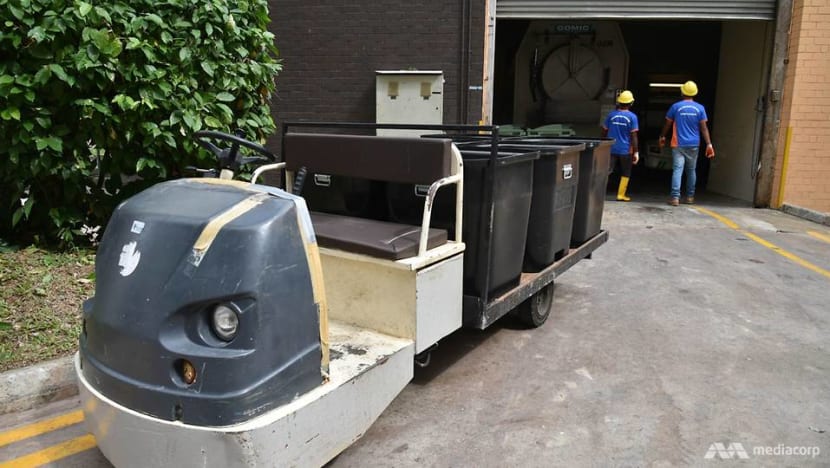
This was a heavy task, literally. When full, a 250-litre trash bin can weigh around 50kg. Hauling it onto the raised platform of the cart required some physical effort.
Now with the help of technology, it requires just one worker and an electric cart that goes by the name of OMO - or one-man operator, to give the vehicle its full name. The cart has a series of levers that operate a mechanical arm which lifts a bin to tip out its contents.
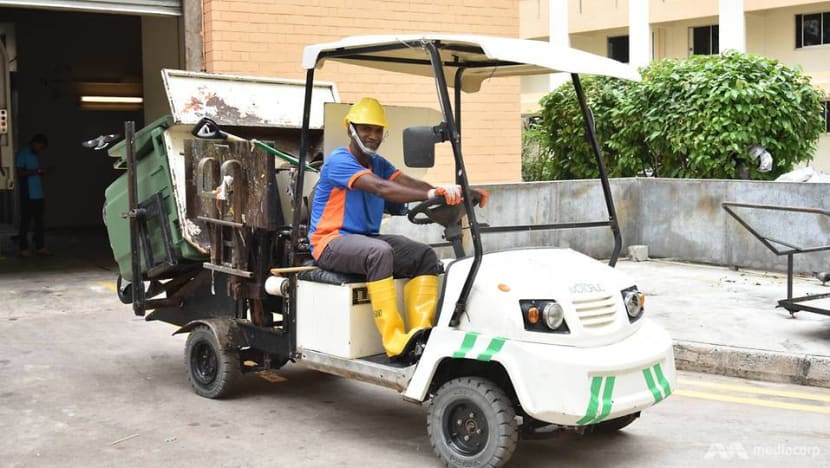
The contractor rents five of these carts from a company called Waste Management at S$1,200 a month each.
“We designed this to cater to Singaporeans,” the company's general manager Loo Teck Lim told me. It made the job less back-breaking but Singaporeans still shunned the job, complaining about the stench, he said.
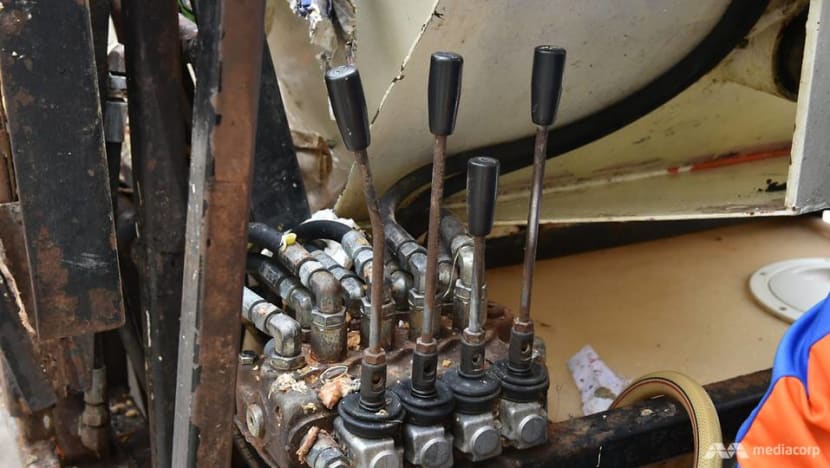
As a result, the waste management industry has to rely on foreign workers to keep Singapore clean.
To put that into context, last year only around 20,000 Singaporean citizens and permanent residents, or less than one per cent of Singapore’s employed residents, worked in industries classified as “others”, according to the Department of Statistics.
This category includes agriculture, fishing, quarrying, utilities, and sewage and waste management.
The Ministry of Manpower does not break down data according to industry or nationality when it comes to the foreign workforce. As of June this year, there were about 436,000 semi-skilled foreign workers in Singapore, excluding those working in construction and as foreign domestic workers. Some of them are on the front line of dealing with Singapore's waste.
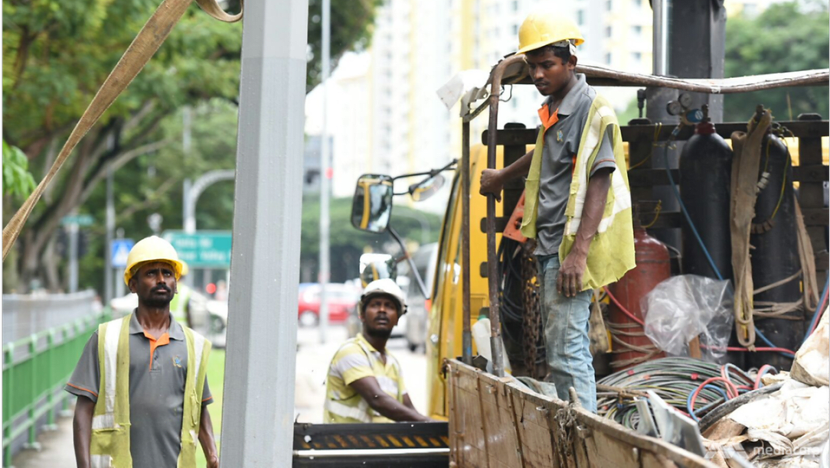
Ah Chye said his waste collectors are all from Bangladesh. I’ll be a Singaporean pioneer, I thought to myself.
We walked across Bangkit Road to Block 252, where I was greeted by supervisor Ronny, sporting a Bluetooth headset and a town council polo tee.
The portly Bangladeshi has been a supervisor for two years and directs his workers in fluent Bengali. But he spoke to me in perfect Singlish, complete with the accent and the lahs.
Ronny handed me a plastic bag. In it was a blue and orange uniform, work gloves, masks and a yellow hard hat.
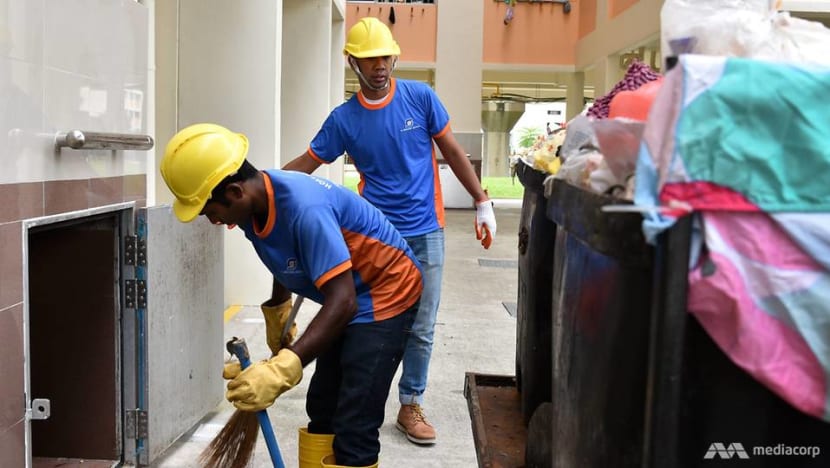
"Why the need for a helmet?" I asked.
Glass bottles and other hard objects might come flying down the chute when workers are cleaning it, Ronny said.
“So it’s good if people tie up their trash properly?” I asked, half-thinking of the advice my mum always gives me. Ronny shot me an incredulous look. “Where got people think of that? They just throw.”
LEVERS, ROACHES AND THE STENCH
I put on the uniform and equipment in the bin centre. That is where all trash collected goes to before it is picked up by public waste collectors. The centre was cavernous but spartan. There was an old black sofa, a couple of toilets and a room for my belongings. Cockroach wings were scattered across the floor. When fresh trash is brought in, the place stinks.

Despite the smell, Zuwel did not put on a mask. I followed suit, trying to overcome my disgust. He was armed with impossibly simple tools: A broom, a shovel and a small dustpan made out of a plastic cup attached to a wooden pole.
Zuwel skilfully manoeuvred the cart through void deck pillars and shelter stands to get to the refuse chutes. From afar, a toddler saw us and waddled quickly into his mother’s arms.
As I opened my very first refuse chute, three cockroaches scurried out. The stench assaulted my nostrils. Thick, green grime coated the floor.
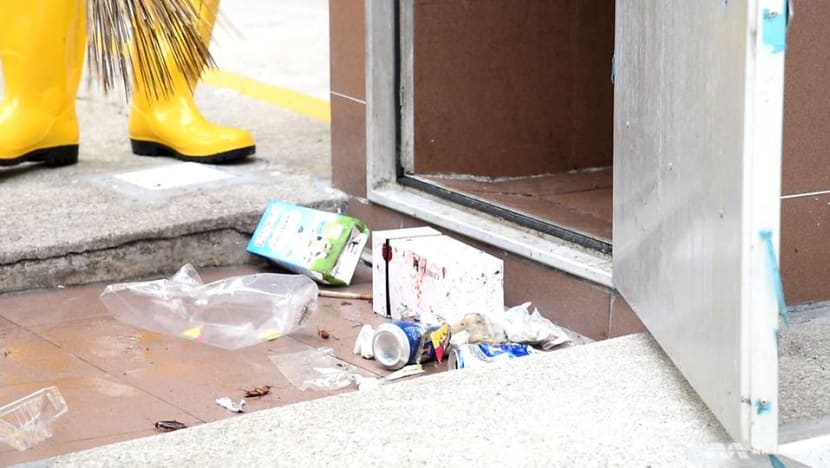
I dragged the bin out and stuck my hand in the chute to sweep out trash which landed on the floor. The bin had cracked through wear and tear. Filth oozed out from the cracks. Zuwel used the shovel to scrape grime off the floor. I rinsed it clean using water from the cart.
He looked on as I did things too slowly, moving gingerly with a grimace etched across my face. Zuwel had many blocks to cover and had little time to indulge my reluctance to get stuck in.
Fortunately, I did not have to manually lift the heavy bin to empty it into the cart. I pushed some levers on the cart and with the hissing of hydraulics, the mechanical arm unfolds, lifts the bin and tips it over.
The trash hit the cart with crashes and bangs. Some missed the target and I got foul liquid splashed on me.
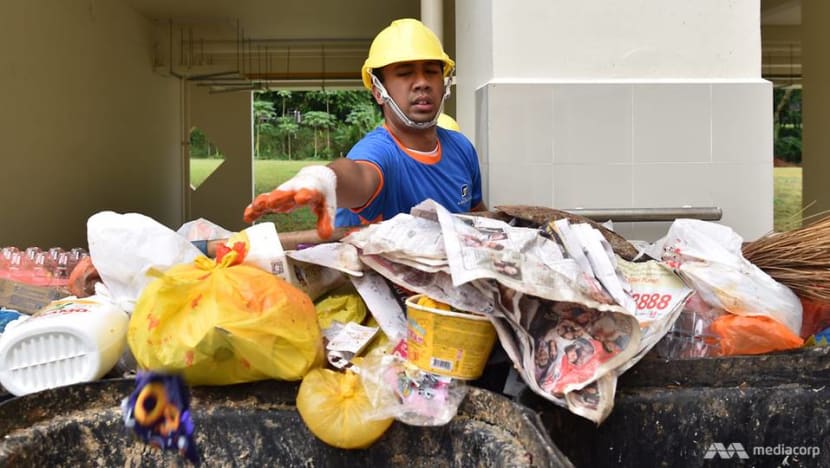
I lowered the bin and swept the floor. The waiting mynahs watched on in disappointment. But when another family of roaches darted out, they swooped in, cawing in delight.
At another refuse chute, a few bags of trash crashed on the floor with a loud thud, just after I pulled the bin out. Zuwel pulled me aside and waited a minute to make sure no more trash was making its way down the chute.
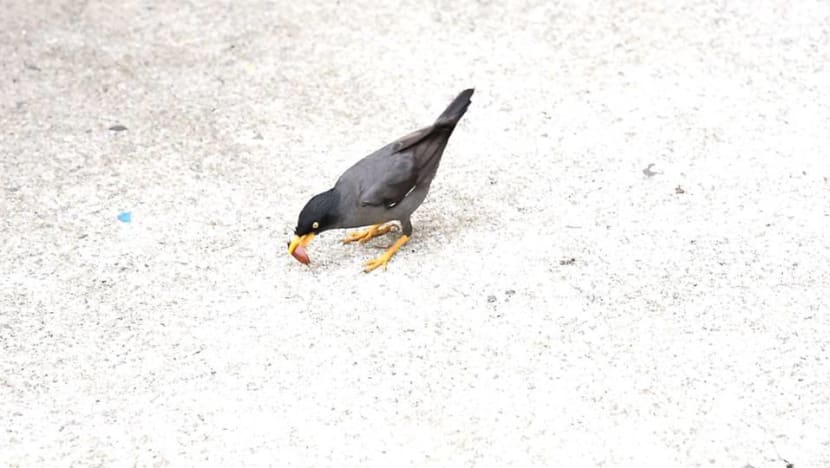
Few residents secured their trash in plastic bags. So, I was privy to the discarded items, which included leftover rice, empty containers, used sanitary pads, handbags, a Smurf figurine, and an old birthday photo. Centipedes and millipedes, their gazillion legs in full glory, wriggled among the waste.
THE SPIRALLING TRASH PROBLEM
The rubbish is cleared daily, yet the bins are almost always filled to the brim.
In 2016, Singapore generated 7.81 million tonnes of waste – enough to fill 3,000 Olympic-sized swimming pools. This figure is a 140,000-tonne increase from 2015, and hovers close to the record 7.85 million tonnes thrown out in 2013.
Plastics (762,700 tonnes) and food (679,900 tonnes) made up the largest chunks of the three million tonnes of waste that is disposed, and most of this goes to the incinerators.
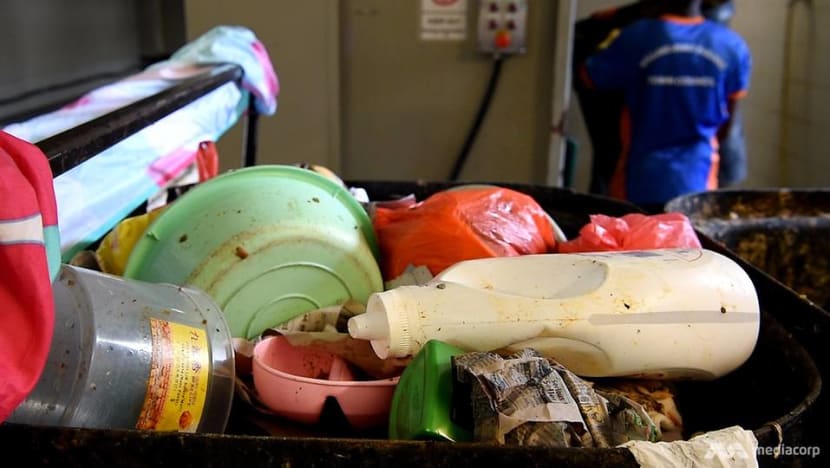
According to the Ministry of the Environment and Water Resources, 200,000 tonnes of solid waste and incineration ash are sent to the Semakau landfill each year. At this rate, the landfill is expected to run out of space by 2035.
While the National Environment Agency (NEA) said the rise in generated waste is “in tandem with Singapore's economic growth and increase in population”, the Government is trying hard to turn the country into a zero-waste nation.
One way is encouraging recycling through dual chutes for refuse and recyclables, with the target for Singapore’s household recycling rate set at 30 per cent by 2030. However, the rate has remained stagnant at around 20 per cent for the past few years.
"From surveys, apart from citing lack of time and not knowing what and how to recycle, many residents said that they would recycle if it is convenient to do so," NEA said.
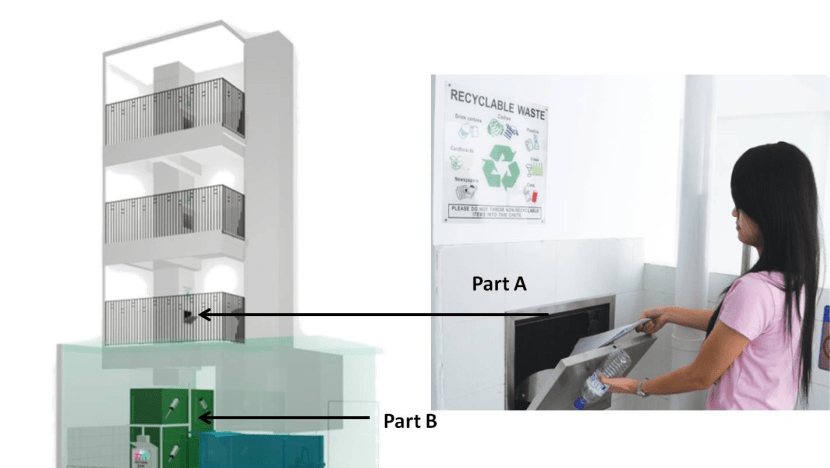
There are some improvements, though. The household recycling rate increased from 19 per cent in 2015 to 21 per cent in 2016. This is due to a two per cent drop in domestic waste generated and an eight per cent increase in domestic waste recycled, NEA said.
“Zero-waste nation is a big word,” interim director of the Residues and Resource Reclamation Centre Grzegorz Lisak told me, pointing to Singaporeans’ desire for high quality and fresh products.
Waste reducing attitudes should be instilled from a young age, he added. This should come in kindergartens and primary schools, and through the use of social media. A pay-as-you-throw scheme and vending machines that "buy" recyclables would help too.
And to achieve recycling targets, NEA said, it is crucial to involve the industrial and commercial sector. This involves getting large hotels and shopping malls to report waste data and waste reduction plans, and recognising companies that made "notable efforts and achievements in reducing packaging waste".
“Step by step, we are moving in this direction,” Dr Lisak said. “With the implementation of circular economy and national policy, Singapore will be a smart nation that efficiently and effectively controls its waste.”
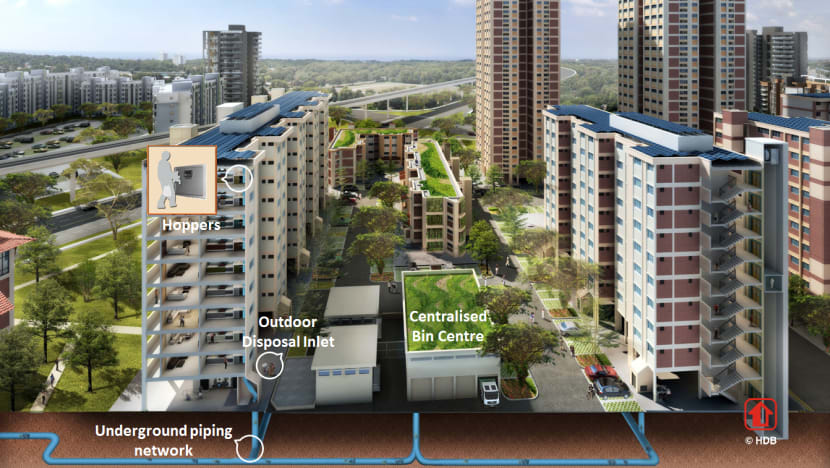
One smart technology is the pneumatic waste conveyance system, which transports rubbish from a refuse chamber to a centralised bin through underground pipes using air. This cuts manpower needs and minimises odour and pests.
The Housing and Development Board (HDB) piloted the system in Yuhua, with more than 100 condominiums – like Palette at Pasir Ris and Sky Habitat at Bishan – following suit.
HDB will also install the system in upcoming estates like Tampines North and Bidadari, and existing ones like Teck Ghee and Ang Mo Kio, where 40 blocks – comprising 5,800 households – will be retrofitted.
More recently, NEA announced on Dec 11 plans for the cleaning and waste management industry to use technology to ease manpower shortage. Under a new skills framework, workers can also undergo training for these higher-skilled jobs.
The technology includes autonomous vehicles that clean the streets, robots that scrub floors and sensors that tell if a rubbish bin is full. NEA hopes the automation will benefit 30,000 workers by 2025.
ZUWEL AND FAREWELL
But back in Bukit Panjang, Zuwel and I still had to use our hands.
We repeated the routine on the second day. After each block – which usually has six chutes – was cleared, we unloaded our cargo into a compacter in the bin centre.
The compacter was a monster with a mouth that opens and closes, gobbling up trash with an automated lifter and compressing it for the garbage truck that pulls by every morning.
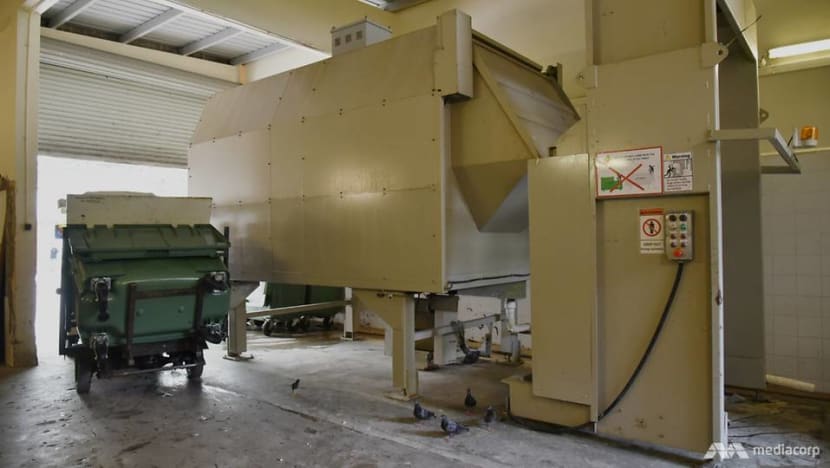
And it was during these back-and-forth trips to the bin centre that I got to know my mentor better.
Zuwel spoke softly in halting English. Before coming here, he told me, he worked in construction in Brunei. So he knows a bit of Malay as well.
Which is better, Brunei or Singapore? They’re the same, he replied, because the Brunei ringgit and Singapore dollar are equal. That’s when I understood his priorities.
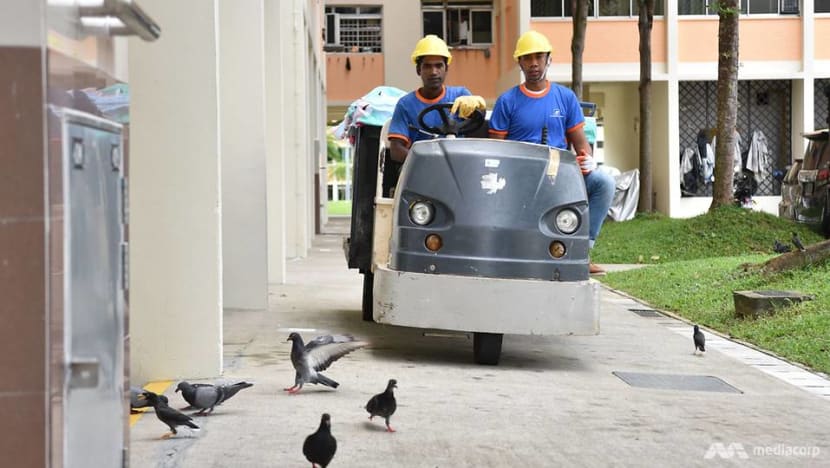
Zuwel told me he got married barely half a year ago. The wedding was in Bangladesh, in his hometown of Tangail. He earns S$700 a month, he said. It’s too expensive to get married here. Not everyone is able to get a decent-paying, comfortable job, but it is an honest living.
By the third block, I was exhausted from the bending over, the heavy pulling and the smells. I was also struck by the monotony.
Zuwel had no such complaints. He let cockroaches run up his shoes. He used his hands to gather the trash when it could not fit into the dust pan. He laughed and took over when I hesitated to pull out a bin.
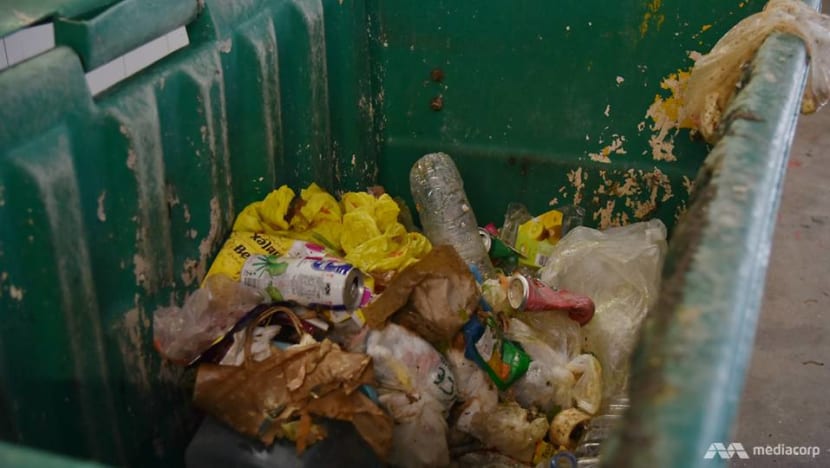
I tried my hand at driving the cart. It wasn’t easy. The steering was stiff and the pedals were sensitive.
More than halfway through our shift, the skies grew dark. “If it rains, it’s a problem,” Zuwel told me. Thankfully, it only drizzled. I could only imagine what he goes through when it pours – being battered by the rain while picking up soggy trash.
I had experienced enough by lunchtime. I found the work tiring, repetitive and revolting. At the same time, I felt a deep sense of gratitude for men like Zuwel. It is easy to forget about these near-invisible workers who do what many Singaporeans shun.
Back at the bin centre, I laid my equipment on the sofa, washed my smelly, sweaty hands and tried to hug Zuwel. He didn’t reciprocate, so I backed off.
“Boss, I go eat first,” he said.
https://www.channelnewsasia.com/sin...ncid-repulsive-and-sobering-experience-988706



